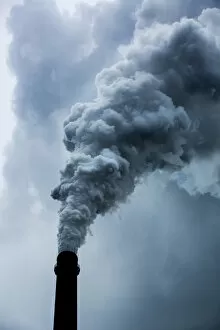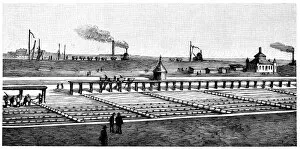Smokestacks Collection (#2)
"Smokestacks: A Glimpse into the Industrial Landscape" From towering smokestacks piercing the city skyline to historical depictions of industrial might
All Professionally Made to Order for Quick Shipping
"Smokestacks: A Glimpse into the Industrial Landscape" From towering smokestacks piercing the city skyline to historical depictions of industrial might, these captivating structures have long been an emblem of progress and human endeavor. Whether they evoke memories of bustling factories or represent a symbol of urbanization, smokestacks hold a unique place in our collective consciousness. In the heart of cities, their presence is undeniable. Rising above rooftops and skyscrapers, smokestacks paint a picture of urban life. They stand as silent sentinels overlooking ever-changing city views, witnessing the ebb and flow of daily existence. As we gaze upon them, we are reminded that behind these steel giants lie stories untold - tales woven within brick walls and echoing through abandoned corridors. The Sugar Mills capture another facet of this narrative; their smokestacks once belched plumes signaling prosperity fueled by labor-intensive processes. These mills were not merely places for production but also hubs where communities thrived amidst sweet aromas wafting through nearby neighborhoods. Historical artwork like "Bombardment and Capture of Fort Henry" transports us back to a time when smokestacks played pivotal roles in shaping nations during times of conflict. The juxtaposition between war-torn landscapes and billowing chimneys serves as a reminder that even amidst chaos, industry perseveres. On the cover page of DuPont Magazine's "Leaving work in the snow, " we witness workers trudging home under smoky skies – evidence that despite adverse weather conditions or challenging circumstances, life continues unabated around these towering structures. The U. S. Metal Products Company plant in Queens stands as testament to how smokestacks became synonymous with economic growth on an industrial scale. This site served as both workplace and livelihood for countless individuals who contributed to America's rise as an economic powerhouse.










